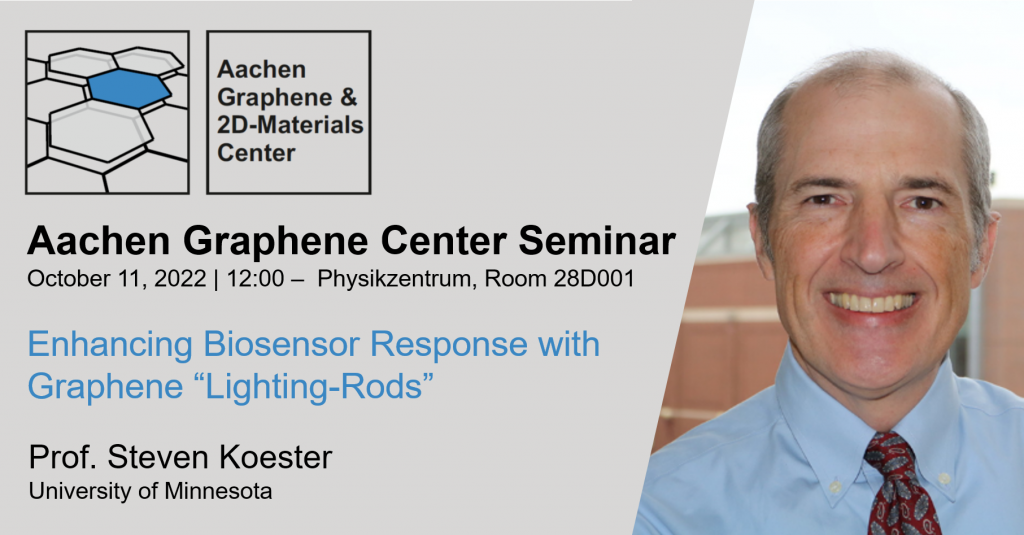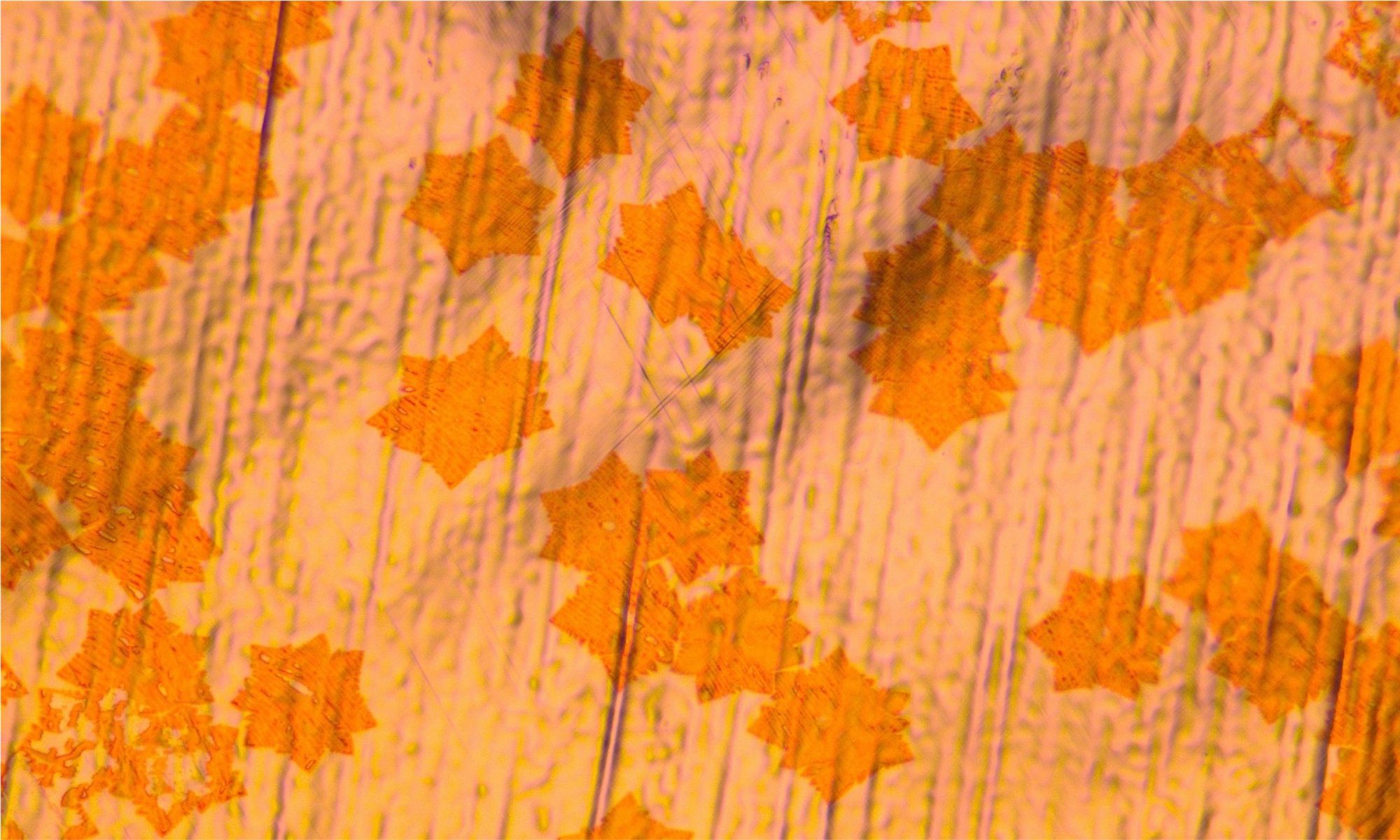October 11, 2022, Prof. Steven Koester, from the University of Minnesota, has presented some of the latest results of his group on graphene-based bio-sensors during the 31th Aachen Graphene Center Seminar.
Prof. Koester is the Russell J. Penrose Professor of Nanotechnology at the University of Minnesota, and the Director of the Minnesota Nano Center. He is presently spending a sabbatical at RWTH Aachen University, with a Theodore von Kármán fellowship.

TITLE: Enhancing Biosensor Response with Graphene “Lighting-Rods”
ABSTRACT: Graphene field-effect transistor (GFET) sensors have emerged as a promising platform for detection of clinical biomarkers, such as DNA, RNA, proteins, and antibodies [1]. As such, graphene is interesting to create a new class of low-cost, point-of-need diagnostic systems. In order to be competitive for these applications, GFET sensors must provide target specificity, have high sensitivity, and achieve a result in a short period of time. While sensitivity and specificity can readily be achieved using appropriate surface functionalization, rapid readout remains a challenge.
In this talk, I will show how dielectrophoresis (DEP) can be used as an effective technique to create graphene GFET sensors with ultra-fast response. DEP is a technique by which a neutral, but polarizable particle can be attracted toward a location where a large electric field gradient exists [2]. Due to its atomic-scale thickness, graphene can produce enormous electric field gradients at its edges, effectively acting as a nanoscale “lightning rod” [3]. When an AC bias is applied, this same effect can selectively attract polarizable neutral particles via the DEP effect. Here, I will describe the theory of DEP trapping, and show how a variety of nanoparticles can be trapped at extremely-low voltages at graphene edges [3]. I will also show recent results whereby trapped particles at the graphene edges can be detected electrically, and also describe several strategies to enhance the sensitivity of DEP GFET devices [4]. Finally, I will discuss future challenges to realize fully-functional DEP-enhanced GFET biosensors.
As part of this presentation, I will also give an introduction to the University of Minnesota (UMN), one of the largest universities in the United Sates by student population, the Minnesota Nano Center, which is a primary driver of nanoscale fabrication innovation in the Upper Midwest of the United States, and also other 2D-material research in the Koester NanoDevice Group at UMN.
[1] I. Prattis, E. Hui, P. Gubeljak, G. S. Kaminski Schierle, A. Lombardo, and L. G. Occhipinti, “Graphene for biosensing applications in point-of-care testing,” Trends in Biotechnology 39, 1065-1077 (2021).
[2] A. H. Pohl, Dielectrophoresis. Cambridge University, 1978.
[3] A. Barik, Y. Zhang, R. Grassi, B. P. Nadappuram, J. B. Edel, T. Low, S. J. Koester, and S.-H. Oh, “Graphene-edge dielectrophoretic tweezers for trapping of biomolecules,” Nat. Commun. 8, 1867 (2017).
[4] N. Izquierdo, R. Li, S.-H. Oh, and S. J. Koester, “Demanding more from graphene-based sensors: design and development of multi-functional GFET with dielectrophoresis enhanced sensing capabilities,” to be presented at the 2022 Fall MRS Meeting, Boston, MA, USA, Nov. 27 – Dec. 2, 2022.
SPEAKER BIO: Steven J. Koester is the Russell J. Penrose Professor of Nanotechnology at the University of Minnesota, and the Director of the Minnesota Nano Center. He received the Ph.D. in 1995 from the University of California, Santa Barbara. From 1997 to 2010, he was a research staff member at the IBM T. J. Watson Research Center and performed research on a wide variety of electronic and optoelectronic devices, with an emphasis on those utilizing the Si/SiGe material system. From 2006 to 2010 he served as manager of Exploratory Technology at IBM Research where his team investigated advanced device and integration concepts for use in future generations of CMOS technology. Since 2010, Dr. Koester has been a Professor of Electrical & Computer Engineering at the University of Minnesota where his research focuses on novel electronic, photonic, spintronic and sensing device concepts with an emphasis on graphene and other 2D materials. Dr. Koester has authored or co-authored over 300 technical publications and conference presentations, 7 volumes, 4 book chapters, and holds 73 United States patents. He is a Fellow of the IEEE and Optica.
